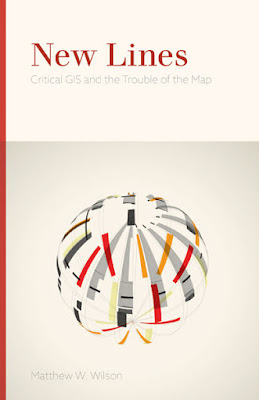Corrective Optics
The Singapore Journal of Tropical Geography's AAG plenary lecture by May Yuan has been published, alongside commentaries by David O'Sullivan and me. Yuan also authored a response. I'm so honored to be invited to be included, and I hope that my commentary might contribute to ongoing discussions about the relationship between GIScience and Geography.
Yuan's published lecture is titled "GIS research to address tensions in geography", and it begins with a comparison between the technological innovations of the Hubble telescope and the 3D digital microscope and GIScience research:
"The Hubble telescope has changed the way we understand the universe with new characterization of dark energy, dark matter, black holes, light echoes, and many other astronomical features. Advances in the microscope technology, Swept Confocally Aligned Planar Excitation (SCAPE), capture 3D motion imagery illuminating the structural details and physical movements of nerve cells in a crawling fruit fly larva and following individual single red blood cells through the beating heart... Likewise, GIS‐driven technological and computing advances extend the geographic scope and details that we can observe and analyse at an increasing degree of complexity and dynamics. ... What are the evolutionary effects of GIS on geography? How much does GIS contribute to learning and understanding geographic worlds?" (Yuan 2021, 13-14)
Yuan continues to draw out the specific innovations and contributions that the GISciences have made for Geography, using a framework borrowed from Nystuen (1963) for understanding key tensions in geographical inquiry.
In my commentary, I lean on Haraway to highlight the work that scopic regimes enable:
"The Hubble telescope is a generative object to think with, especially due to the originary flaws in the mirror. The telescope, after being launched in 1990, would require additional mirrors to adjust and correct for the flaw. Without these ‘corrective optics’, Hubble’s vision would be limited, as the smallest structures in galaxies would remain only ever ‘far, far away...’." (Wilson 2021, 37)
Here, I then ask what it might mean to begin, epistemologically, with such optics, situating Nystuen's historically:
"This historical context matters to how we might take up these tensions today. Nystuen presented them as groupings of geographical problems that force into the light the specific properties of an abstract geographical model—the bases of other compounds of problems such as pattern, circulation, and neighbourhood. His intervention advances a nomothetic perspective. It is this orientation that complicates the adoption of these four tensions as a framework to understand the innovation of GIScience." (Wilson 2021, 38)
The relationship between GIS and Geography, Yuan responds, is ever more complicated especially as GIS technologies are taken up widely in fields and disciplines beyond Geography. For Yuan, these developments perhaps underline the unimportance of geographic theory and concepts for GIS researchers:
"Over the last 40 years, the development of GIS has transcended disciplinary boundaries and continues to thrive in diverse fields. Geospatial data are now ubiquitous, and tools for mapping and spatial analysis proliferate. Many GIS researchers have no geographic knowledge and are likely disinterested in concepts and theories in geography. If geography is essential to GIS, we need to embed geographic conceptualization, abstraction, and representation in GIS knowledge production to enforce a sound geographic foundation innate to GIS research. Using tensions that trigger fundamental geographic problems is but one starting point for building conceptualization, abstraction, and representation that may serve the purpose." (Yuan 2021, 42, emphasis mine)



Comments
Post a Comment